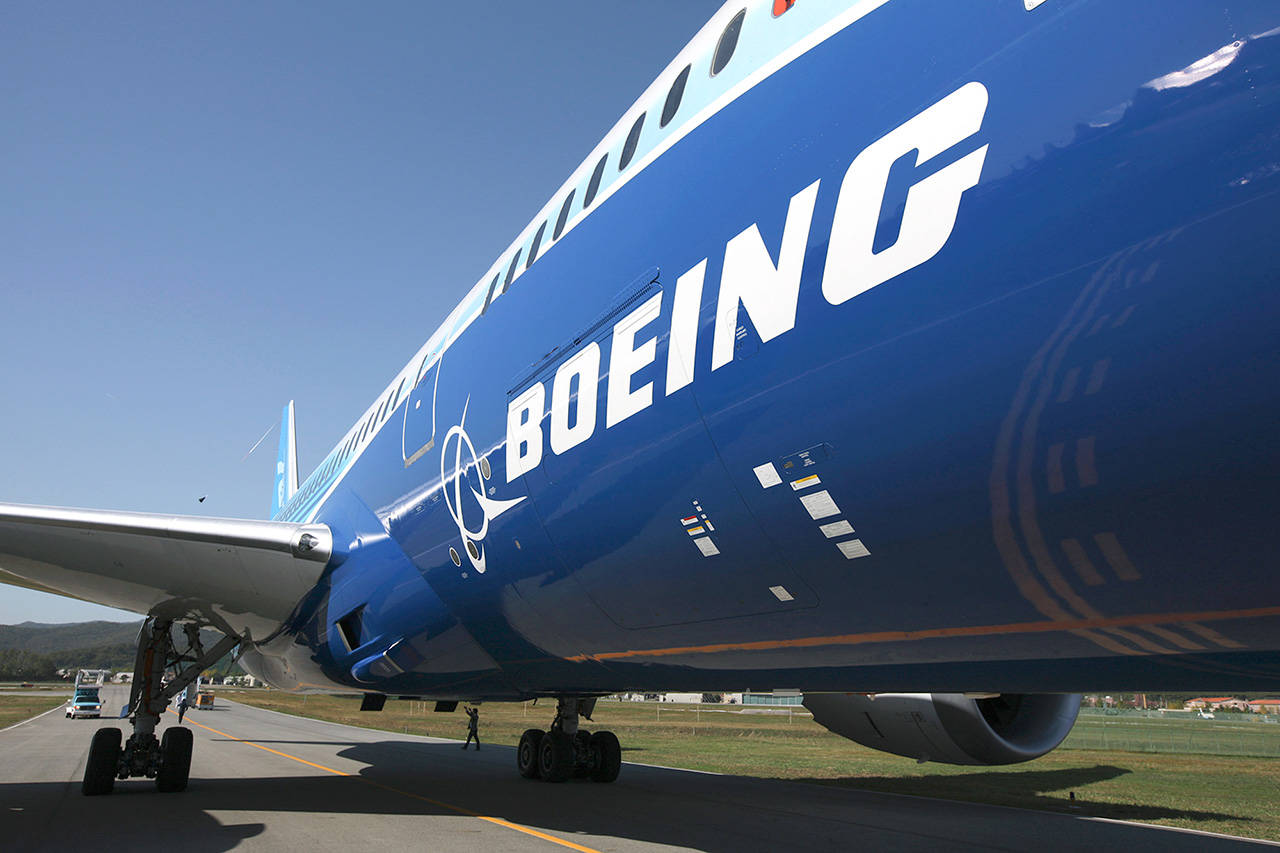By Benjamin Katz, Julie Johnsson and Kaye Wiggins
Bloomberg News
FARNBOROUGH, England — General Electric said it remains unconvinced that demand for Boeing’s potential mid-range aircraft, dubbed the 797, will be enough to justify developing a new engine for the jet.
The U.S. turbine maker needs to do more work on proposals, especially since Boeing has yet to decide whether to recruit an exclusive engine provider or involve two competing suppliers, GE Aviation chief David Joyce said Monday at the Farnborough air show near London.
“We’re still wrestling with what the size of the market is,” Joyce said in a media briefing. “People feel great when you launch, but shareholders don’t feel great until you’re successful.”
Joyce’s caution underscores the uncertainty around Boeing’s propulsion strategy as the planemaker crafts plans for the so-called new mid-market aircraft, or NMA, which it envisions succeeding the 757 and 767 models and halting Airbus’s success in edging into the niche with the popular A321neo. Boeing is mulling a two-jet family with 220 to 270 seats designed for 5,000-mile routes, available by 2025.
The decisions to launch the NMA and select engine suppliers probably won’t be made until next year, Boeing Chief Executive Officer Dennis Muilenburg said in an interview at the aerospace expo. The Chicago-based planemaker is evaluating all options for the turbines and having productive discussions, he said.
GE is bidding for the engine contract through CFM International, its joint venture with France’s Safran. United Technologies Corp.’s Pratt & Whitney division and Rolls-Royce Holdings have also prepared engine proposals for the aircraft, which is the only all-new jetliner in the pipeline among the four largest planemakers.
One potential customer for the plane, Avolon Holdings, is convinced Boeing will opt for two engine suppliers despite the risk that the market may not be large enough for both to see much return on the investment.
“If I was a betting man, I’d think Boeing will go with a dual source,” Domhnal Slattery, CEO of Avolon, a Dublin-based aircraft leasing firm, said in an interview. “They want to give maximum optionality to their airline clients. They want to create maximum tension on pricing. And they want to mitigate technology risk.”
Given concerns over teething issues in current-generation engines, many airlines would prefer to have a choice among new models developed for the Boeing plane. Slattery sees demand for about 3,000 to 4,000 jets in the segment targeted by Boeing.
Airbus would probably claim about half that market, Slattery said, with the remainder split between Boeing’s two NMA models. That would leave relatively small slivers for the engine makers, assuming there are two suppliers. And if Boeing misses the 2025 target entry-into-service date, demand could shrink as airline customers find other aircraft to replace aging 757s and 767s.
Another challenge: bringing manufacturing costs down to the point where Boeing could profitably charge the $70 million or less that major customers are willing to pay.
“I’m sure they’ll build a good airplane, a fantastic airplane in fact,” Slattery said. “But the price they want will be very, very critical.”
Joyce said GE turned down an opportunity to join Boeing in a joint venture to develop auxiliary power units that help start jet engines and provide electricity while planes are on the ground because it preferred to allocate capital elsewhere.
Safran opted to join Boeing in the venture, which will challenge United Technologies and Honeywell International Inc., the leading manufacturers in the APU market.
Bloomberg’s Christopher Jasper contributed.
Talk to us
> Give us your news tips.
> Send us a letter to the editor.
> More Herald contact information.

























